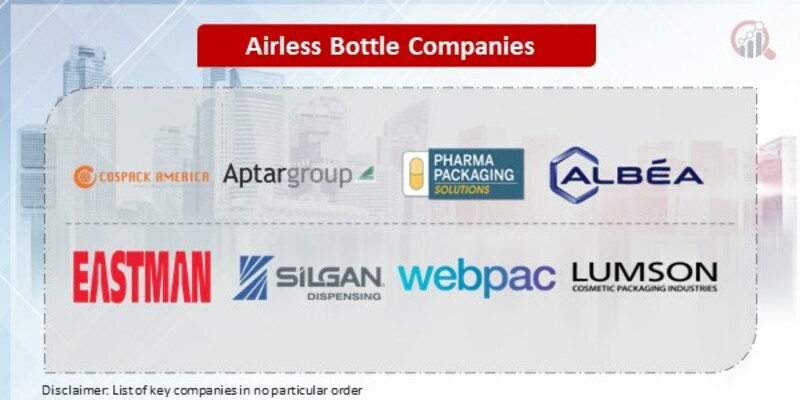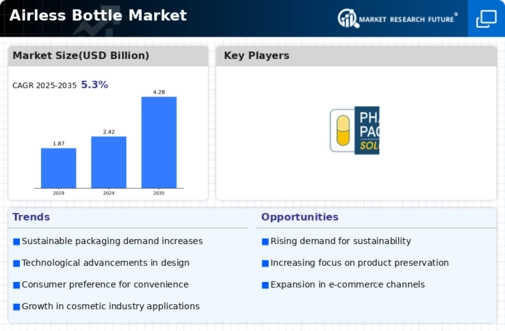Top Industry Leaders in the Airless Bottle Market

The airless bottle market is experiencing a surge in popularity, driven by growing consumer demand for sustainable and innovative packaging solutions. With an expected CAGR of 5.3% during the forecast period of 2023-2032, the market offers lucrative opportunities for established players and aspiring entrants alike.
Competitive Strategies:
-
Innovation: Leading players like Aptar, Albea, and HCP Packaging are investing heavily in R&D to develop advanced airless pump technologies. This includes focusing on improved functionality, material advancements, and enhanced user experience. For example, Aptar's Airless One technology offers a sleek, single-wall design, while Albea's Airless Bag-on-Valve system provides maximum product protection. -
Sustainability: Sustainability is a key differentiator in the market, with brands and consumers increasingly seeking eco-friendly packaging solutions. Players like Silgan Holdings and Raepak are offering airless bottles made from recycled materials or bio-based polymers. Additionally, companies are focusing on reducing energy consumption and waste generation during production. -
Market Expansion: Established players are expanding their reach into new regions and applications. For instance, Aptar is targeting the growing demand for airless bottles in the food and beverage industry, while Albea is focusing on the pharmaceutical sector. Additionally, mergers and acquisitions are shaping the market, such as the recent acquisition of HCP Packaging by Liqui-Box. -
Partnerships: Collaborations between airless bottle manufacturers, brands, and design firms are becoming increasingly common. This allows for the development of customized solutions that cater to specific product requirements and brand aesthetics.
Factors Influencing Market Share:
-
Product Portfolio & Innovation: A diverse product portfolio catering to various needs, coupled with continuous innovation in design and functionality, are crucial factors for gaining market share. Companies offering airless bottles in different sizes, materials, and pump designs are better positioned to attract a wider customer base. -
Manufacturing Capabilities & Cost-Effectiveness: Efficient manufacturing processes and economies of scale play a significant role in determining product pricing. Companies with established production facilities and cost-competitive offerings gain an edge in the market. -
Distribution Network & Brand Partnerships: Strong relationships with distributors and brand partners are essential for ensuring product availability and market penetration. Collaborating with leading brands can significantly boost market share and brand recognition. -
Marketing & Branding Strategies: Effective marketing campaigns that highlight the benefits of airless bottles, such as extended product shelf life and reduced waste, can attract consumers and influence purchasing decisions. Building a strong brand identity is also crucial for differentiation in the competitive landscape.
Key companies in the Airless Bottle Market include
- Cospack America Corp
- AptarGroup, Inc
- Pharma Packaging Solutions
- Albea Services S.A.S.
- Eastman Chemical Company
- Silgan Dispensing Systems
- Webpac Ltd
- Lumson S.p.A
- WestRock Company
- HCP Packaging UK Ltd
Recent Development
September 2023: HCP Packaging expands its airless bottle portfolio with a new range made from recycled PETG, appealing to eco-conscious consumers.
October 2023: Albéa partners with L'Oréal to develop a refillable airless pump for their Lancôme skincare line, showcasing the growing trend of brand collaborations.
November 2023: Quadpack unveils a new airless bottle made from bio-based sugarcane plastic, demonstrating the increasing focus on sustainable materials.
December 2023: Lumson introduces a smart airless bottle with connected technology, allowing brands to track product usage and refill reminders.

